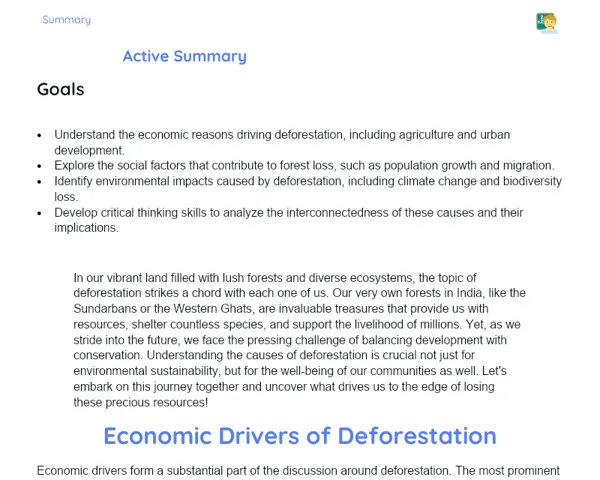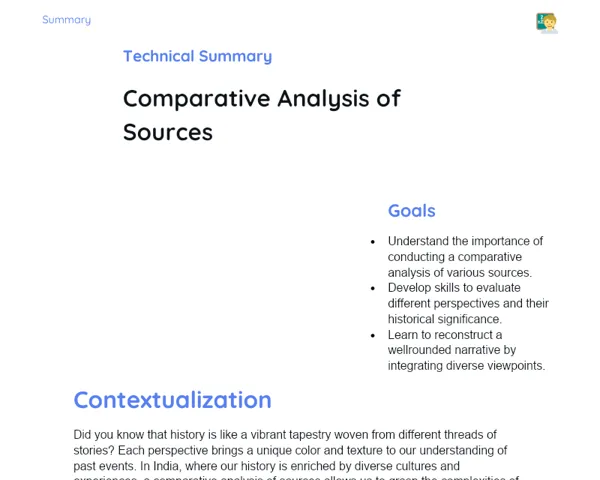## Goals
1. Identify the significant economic contributions made by rural communities in agricultural production.
2. Understand the environmental benefits provided by rural communities through sustainable practices.
3. Recognize the interconnectedness between rural communities and urban consumers in the context of agriculture.
Contextualization
Did you know that in India, nearly 70% of the population lives in rural areas? A significant portion of our food is grown in these communities, where tradition meets innovation. From the lush paddy fields of Punjab to the spice plantations of Kerala, rural areas are not just farms, but vibrant ecosystems that support both agriculture and biodiversity. They play a crucial role in maintaining the balance of our environment, ensuring that we have fresh produce on our tables every day.
Subject Relevance
To Remember!
Economic Contributions of Rural Communities
Rural communities are the backbone of India's agricultural economy, contributing significantly to food production and local markets. They provide employment to millions and produce a variety of crops, ranging from staple grains like rice and wheat to cash crops like sugarcane and cotton. This agricultural output not only feeds the population but also supports ancillary industries such as transportation, processing, and retail, creating a thriving economic ecosystem. By investing in agricultural technologies and sustainable practices, these communities enhance productivity and ensure food security.
-
Direct Employment: Agricultural activities in rural areas create millions of jobs, providing livelihoods for families and supporting local economies.
-
Local Markets: Produce from rural communities often feeds urban markets, illustrating the crucial economic link between rural and urban areas.
-
Innovation and Technology: The adoption of modern farming techniques and sustainable practices in rural communities leads to increased crop yields and better resource management.
Environmental Benefits of Sustainable Practices
Rural communities are stewards of the land, implementing practices that conserve natural resources and maintain biodiversity. Through crop rotation, organic farming, and agroforestry, they enhance soil health and reduce the reliance on chemical fertilizers and pesticides. These sustainable methods not only protect ecosystems but also mitigate climate change impacts by sequestering carbon in the soil. Additionally, rural communities often rely on traditional ecological knowledge, preserving indigenous plant species and creating a resilient agricultural landscape.
-
Soil Conservation: Sustainable practices improve soil quality and prevent erosion, which are critical for long-term agricultural productivity.
-
Biodiversity: Protecting native flora and fauna helps sustain healthy ecosystems, ensuring ecological balance and food security.
-
Climate Resilience: Sustainable practices support adaptation to climate change, helping communities withstand extreme weather conditions.
Interconnectedness between Rural and Urban
The relationship between rural communities and urban consumers is vital for agricultural sustainability. Urban areas depend on rural farmers for food supply, while rural economies benefit from urban markets for their produce. This dynamic fosters a cycle of support where urban consumers can advocate for local produce, improving income for rural communities and encouraging sustainable farming practices. Initiatives such as farmers' markets and community-supported agriculture (CSA) programs exemplify how urban consumers can engage directly with rural producers, strengthening this interdependence.
-
Supply Chains: Understanding how food travels from rural farms to urban kitchens highlights the importance of each player in the agricultural system.
-
Consumer Awareness: Urban consumers who support local farmers contribute to economic stability in rural areas and promote sustainable eating practices.
-
Community Engagement: Programs that connect urban consumers with rural producers foster relationships that benefit both communities, enhancing food security and cultural exchanges.
Practical Applications
-
Support Local Farmers: As a consumer, choose to buy directly from farmers' markets or local produce shops to strengthen rural economies.
-
Participate in Community Gardens: Engage in community gardening initiatives to learn about sustainable practices while contributing to food production.
-
Promote Sustainable Eating: Advocate for and practice a sustainable diet by including organic and locally sourced foods in your meals.
Key Terms
-
Sustainable Agriculture: Farming practices that meet current food needs without compromising future generations' ability to produce food.
-
Biodiversity: The variety of plant and animal life in a particular habitat, crucial for ecosystem resilience.
-
Agroforestry: A land-use management system that combines agriculture and forestry to create more biodiverse and sustainable land-use systems.
Questions for Reflections
-
Reflect on the foods you consume daily. How many of them do you think come from rural communities, and what stories do they carry?
-
Consider the impact of urbanization on rural agriculture. How can urban communities better support rural farmers?
-
In what ways can sustainable agricultural practices enhance the quality of life for both rural and urban populations?
Farm-to-Fork Storytelling Challenge
Create a presentation that tells the story of your favorite local food item. Research its journey from the rural farmer to your plate, including the people involved and the sustainable practices used in its production. Highlight the importance of supporting local agriculture.
Instructions
-
Choose a local food item that you frequently consume.
-
Research where and how it is produced, including the name of the farmer if possible.
-
Investigate the farming practices they use, focusing on sustainability.
-
Create a 5-minute presentation using visuals (like photos or drawings) to share your findings with your class.
-
Be ready to discuss how supporting local foods can impact rural communities and the environment.



